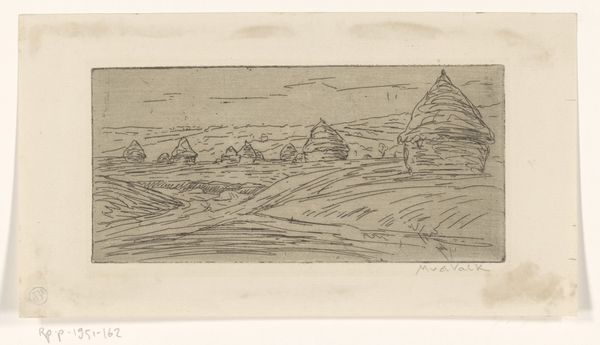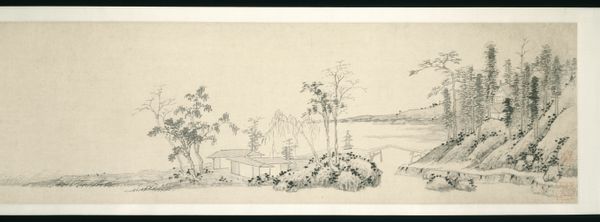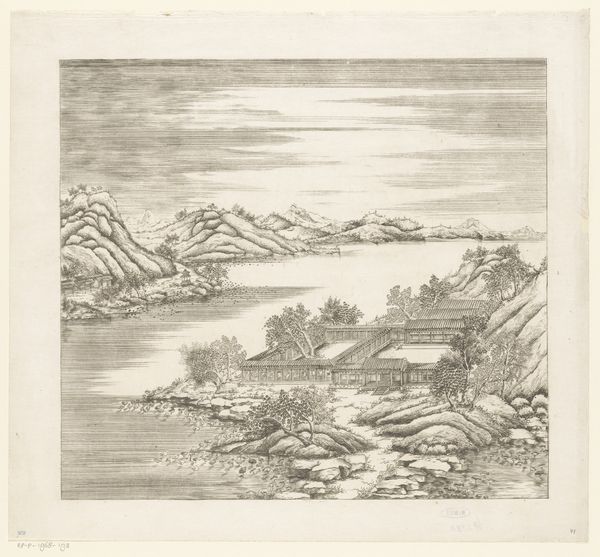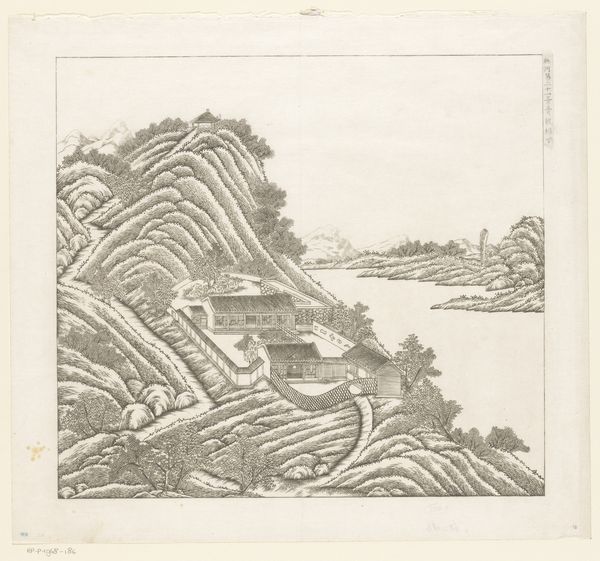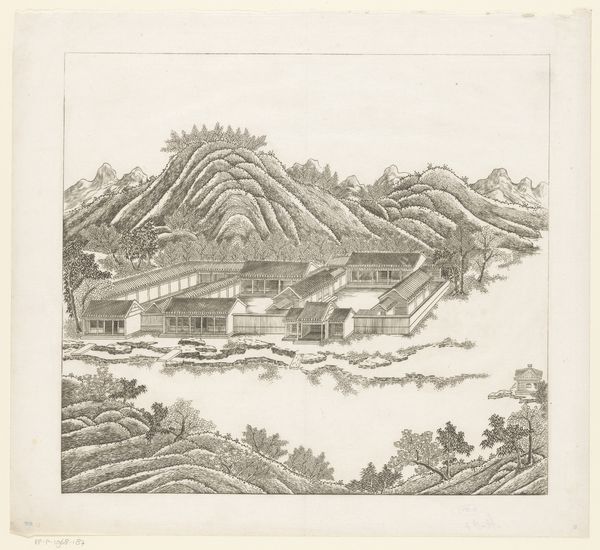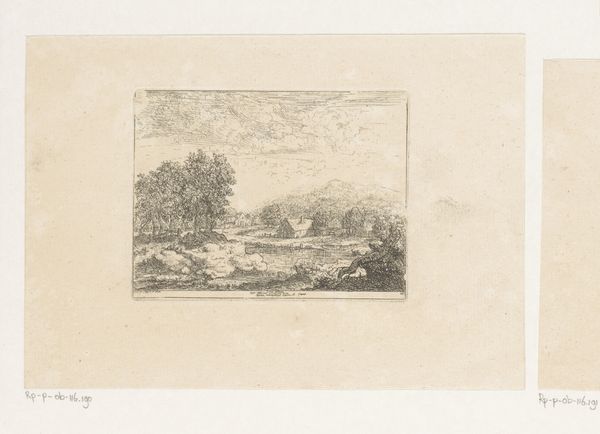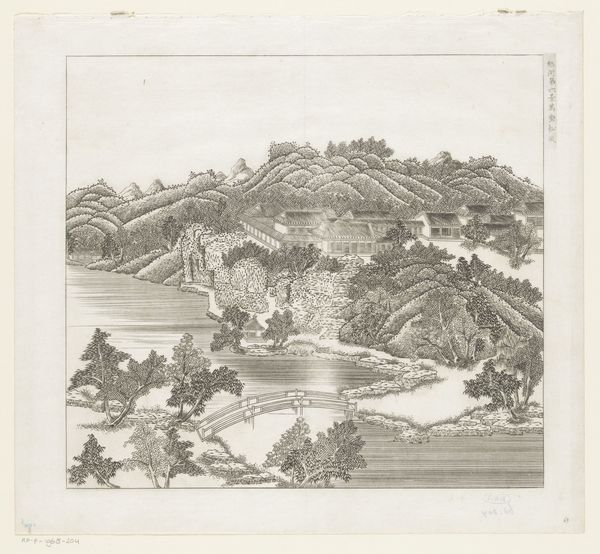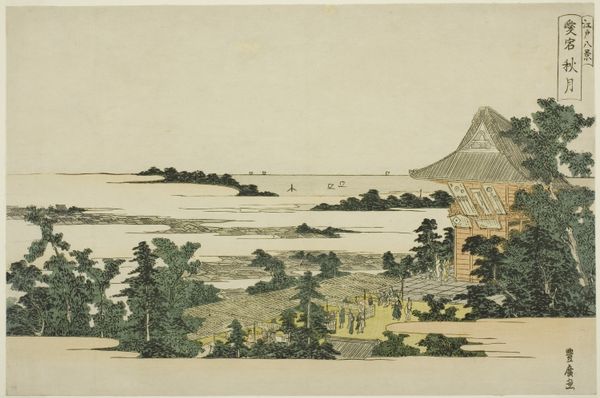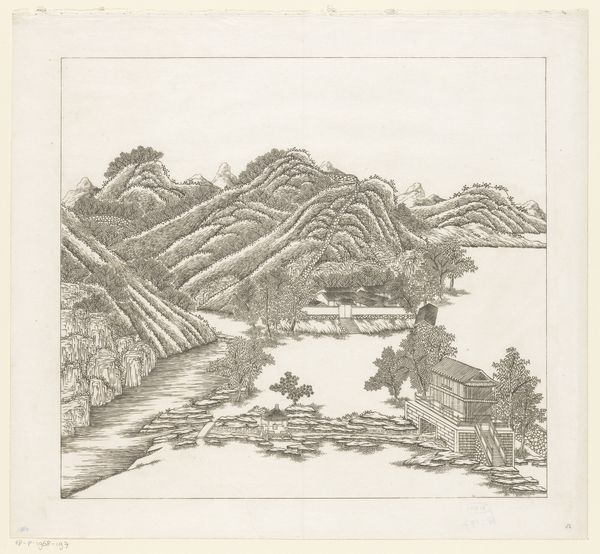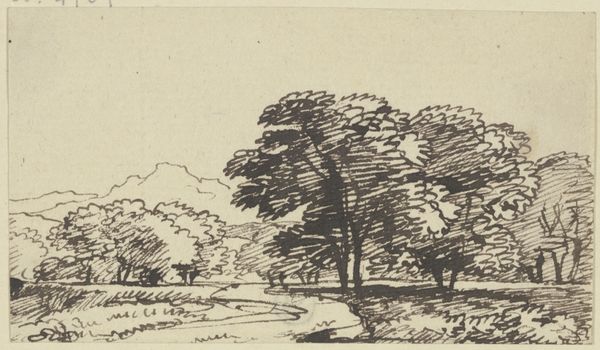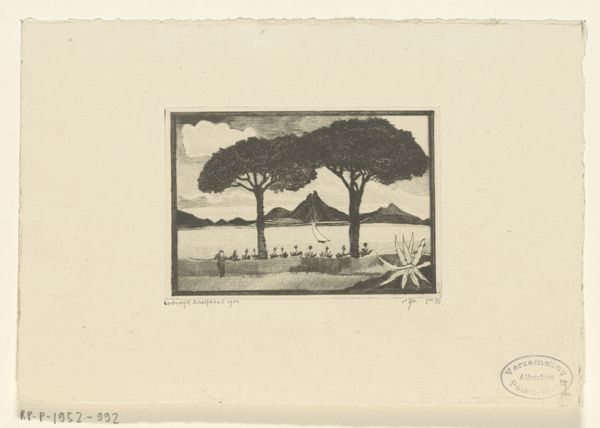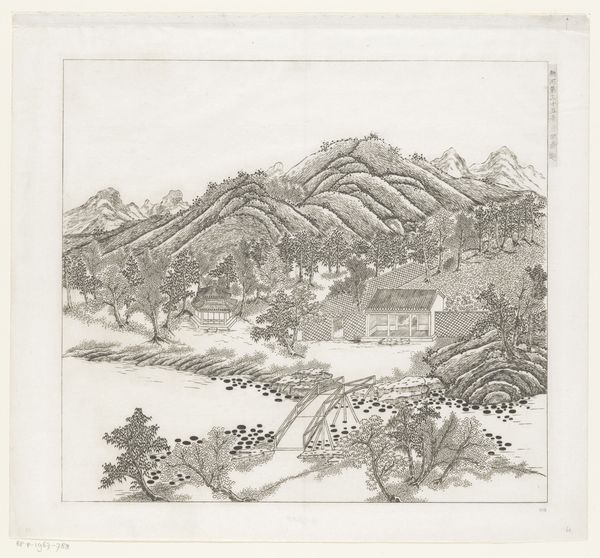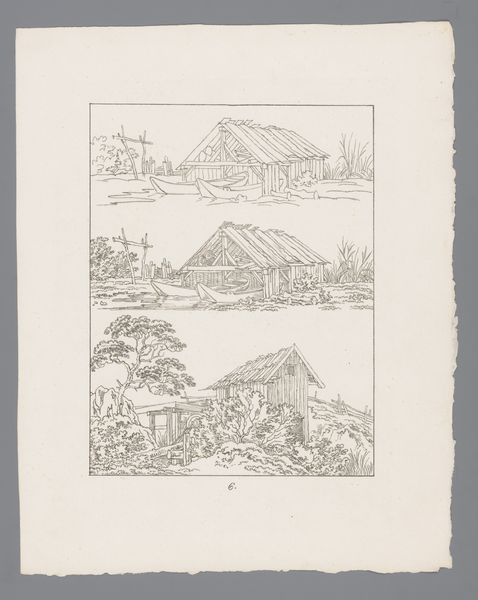
print, woodcut
#
art-deco
# print
#
landscape
#
geometric
#
woodcut
Dimensions: height 225 mm, width 570 mm
Copyright: Rijks Museum: Open Domain
Curator: Welcome. Here we have Johannes Frederik Engelbert ten Klooster's "De baai," created around 1920. This compelling woodcut print presents a serene, stylized landscape. Editor: Whoa, there's something almost graphic novel-y about this piece. All those sharp lines make it seem stark but also super intentional, you know? It's like, controlled chaos in black and white. Curator: Indeed. The stark contrast of black and white, coupled with the geometric forms, aligns this work with the visual language of Art Deco. This period also sees a rise in the aesthetic interest and commodification of ‘the Orient’, as it was known at the time. The print uses the woodcut medium effectively, lending a distinct texture and boldness to the overall composition, nodding perhaps to an orientalizing aesthetic prevalent during the early 20th century. Editor: Yeah, there’s that sense of ‘faraway lands,’ a postcard image but without the sappiness. Like, look at those pine trees, almost aggressively symmetrical and precise—and the mountain in the background sliced with lines. Reminds me of a stylized Japan. Is this maybe Ten Klooster's comment on exoticism? Or fascination, even? Curator: That is a valid observation. During this time, a critical lens might consider that the artist reproduces orientalist notions by flattening a place and culture to geometric lines for the gaze of Western consumption. In terms of influence, it appears to have connections with Japanese woodblock printing and maybe, further along, modernist landscape experimentations by the likes of the German Expressionist group, Die Brücke. Editor: All these crisp forms really flatten the scene, almost making the boats appear two-dimensional. And there's a meditative quiet despite that heavy, carved black ink, like a single deep breath you take when trying to keep calm. That black is just devouring the image almost, in an attractive manner. Curator: Precisely, the composition and subject position the artwork within broader discourses of landscape art. We have to remember that landscape as a concept can encode ideas around territory, nation, identity and even, dare I say it, ownership. And then, what does it mean to create or recreate or to sell, and own a landscape? What do we appropriate or lose? Editor: It does make you wonder, huh? I get so wrapped up in those shapes, and you just made me aware of bigger forces and concerns here. Curator: Understanding context enhances our viewing. I’m so glad that this work of ten Klooster opened itself for consideration from aesthetic and ethical vantage points. Editor: Absolutely, food for thought indeed. I think I'll be chewing on this visual "byte" for the rest of the day.
Comments
No comments
Be the first to comment and join the conversation on the ultimate creative platform.
